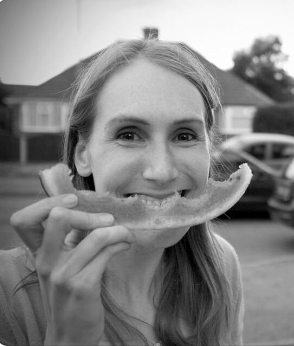Covalent Bonding
The Formation of Covalent Bonds
- Non-metal atoms can share electrons with other non-metal atoms to obtain a full outer shell of electrons
- When atoms share pairs of electrons, they form covalent bonds
- Covalent bonds between atoms are very strong
- When two or more atoms are chemically bonded together, they form ‘molecules’
- Covalently bonded substances may consist of small molecules or giant structures
- Weak intermolecular forces exist between individual molecules
- E.g. Each liquid water molecule consists of two hydrogen atoms covalently bonded to an oxygen atom, and in between two individual water molecules there are weak intermolecular forces
- Shared electrons are called bonding electrons and occur in pairs
- Electrons on the outer shell which are not involved in the covalent bond(s) are called non-bonding electrons (or lone pairs)
- Simple covalent molecules do not conduct electricity as they do not contain free electrons

Diagram showing covalent bonding in a molecule of chlorine (Cl2)
Examiner Tip
A key difference between covalent bonds and ionic bonds is that in covalent bonds the electrons are shared between the atoms, they are not transferred (donated or gained) and no ions are formed.
Covalent bonding is only shown between non-metals in this specification (hydrogen and the elements on the right of the periodic table).
Simple Covalent Molecules
- Covalent substances tend to have small molecular structures, such as Cl2, H2O or CO2
- These small molecules are known as simple molecules
- Small covalent molecules can be represented by dot and cross diagrams
- You need to be able to describe and draw the structures of the following molecules using dot-and-cross diagrams: hydrogen (H2), chlorine (Cl2), oxygen (O2), nitrogen (N2), hydrogen chloride (HCl), water (H2O), ammonia (NH3) and methane (CH4)
- The correct dot and cross diagrams for these molecules are shown below:

Dot & cross representation of a molecule of hydrogen

Dot & cross representation of a molecule of chlorine

Dot & cross representation of a molecule of oxygen

Dot & cross representation of a molecule of nitrogen

Dot & cross representation of a molecule of hydrogen chloride

Dot & cross representation of a molecule of water

Dot & cross representation of a molecule of ammonia

Dot & cross representation of a molecule of methane
Examiner Tip
Simple covalent molecules are small and can be separated into individual molecular units without breaking any chemical bonds (although there will still be strong covalent bonds holding the atoms in each individual molecule together.) Giant ionic and covalent structures form huge continuous networks of atoms that are bonded together and cannot be separated into individual units without breaking bonds.
Limitations of Models for Simple Covalent Molecules
- Dot and Cross Diagrams
- Advantages:
- Useful for illustrating the transfer of electrons
- Indicates from which atom the bonding electrons come from
- Disadvantages:
- Fails to illustrate the 3D arrangements of the atoms and electron shells
- Doesn’t indicate the relative sizes of the atoms
- Advantages:

A dot & cross diagram of ammonia
- Ball and Stick Model
- Advantages:
- Useful for illustrating the arrangement of atoms in 3D space
- Especially useful for visualizing the shape of a molecule
- Disadvantages:
- Fails at indicating the movement of electrons
- The atoms are placed far apart from each other, which in reality is not the case as the gaps between atoms are much smaller
- Advantages:

Ball and stick model of ammonia which illustrates the 3D arrangement of the atoms in space and the shape of the molecule
- 2D Representations of Molecules
- Advantages:
- Displayed formulae are 2D representations and are basically simpler versions of the ball and stick model
- Adequately indicate what atoms are in a molecule and how they are connected
- Disadvantages:
- Fail to illustrate the relative sizes of the atoms and bonds
- Cannot give you an idea of the shape of a molecule and what it looks like in 3D space
- Advantages:

Displayed formula of ammonia
Examiner Tip
You should be able to confidently describe the limitations of particular representations and models, including dot and cross, ball and stick models and 2D representations.

